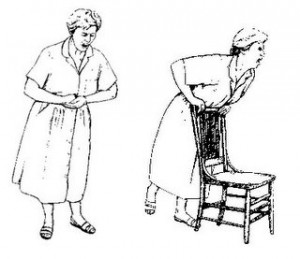Longform pointed me to “The Choke Artist,” an interesting 2007 New Republic article by Jason Zengerle about Dr. Henry J. Heimlich, the creator of the anti-choking thrust, who’s searched, somewhat dubiously, for a second life-saving act in his career while being criticized for his methods. An excerpt:
“‘A serious matter has been brought to my attention,’ the letter began. Addressed to an official in the Office for the Protection of Research Subjects at the University of California at Los Angeles, it accused two UCLA medical researchers of participating in illegal human experiments on HIV patients in China. “These experiments consist of giving malaria to people already suffering from HIV and full-blown AIDS,” the letter alleged, before going on to make an even more startling claim: ‘[T]hese experiments have been conducted under the direction of Dr. Henry J. Heimlich, known for the Heimlich maneuver.’
 The letter, which was sent via e-mail in October 2002 and was from a ‘Dr. Bob Smith,’ was merely the first in a series of epistolary attacks against Heimlich. A few months later, editors at more than 40 publications—ranging from The New York Times to the medical journal Chest—received missives from someone calling himself ‘David Ionescu’ that accused Heimlich of improperly taking credit for inventing a type of esophageal surgery. And then, in September 2003, the website heimlichinstitute.com went online. Its URL was almost identical to the official website of Henry Heimlich’s Heimlich Institute, heimlichinstitute.org, but, rather than being dedicated to burnishing the doctor’s legend, it was devoted to tearing it down. The site featured a long, angry indictment of Heimlich and accused him of all sorts of medical misconduct. The site’s proprietor was listed as ‘Holly Martins’—the protagonist in the 1949 film noir The Third Man.
The letter, which was sent via e-mail in October 2002 and was from a ‘Dr. Bob Smith,’ was merely the first in a series of epistolary attacks against Heimlich. A few months later, editors at more than 40 publications—ranging from The New York Times to the medical journal Chest—received missives from someone calling himself ‘David Ionescu’ that accused Heimlich of improperly taking credit for inventing a type of esophageal surgery. And then, in September 2003, the website heimlichinstitute.com went online. Its URL was almost identical to the official website of Henry Heimlich’s Heimlich Institute, heimlichinstitute.org, but, rather than being dedicated to burnishing the doctor’s legend, it was devoted to tearing it down. The site featured a long, angry indictment of Heimlich and accused him of all sorts of medical misconduct. The site’s proprietor was listed as ‘Holly Martins’—the protagonist in the 1949 film noir The Third Man.
The octogenarian Heimlich seemed an unlikely target of so many people’s ire. He had entered into the pantheon of medical history not for inventing a disease-eradicating vaccine or for isolating the DNA of a killer virus but, rather, for developing an anti-choking maneuver that even a child could perform. And, yet, it is the very simplicity of Heimlich’s lifesaving technique that makes it so ingenious; because anyone can perform the maneuver, anyone can save a life. Since its invention in 1974, it has become a standard First Aid procedure around the world; and, while it may have been hyperbole for Norman Vincent Peale to once declare that Heimlich ‘has saved the lives of more human beings than any other person living today,’ it was fair to say that, by the measure of name recognition at least, the maneuver had made Heimlich America’s most famous doctor.”

